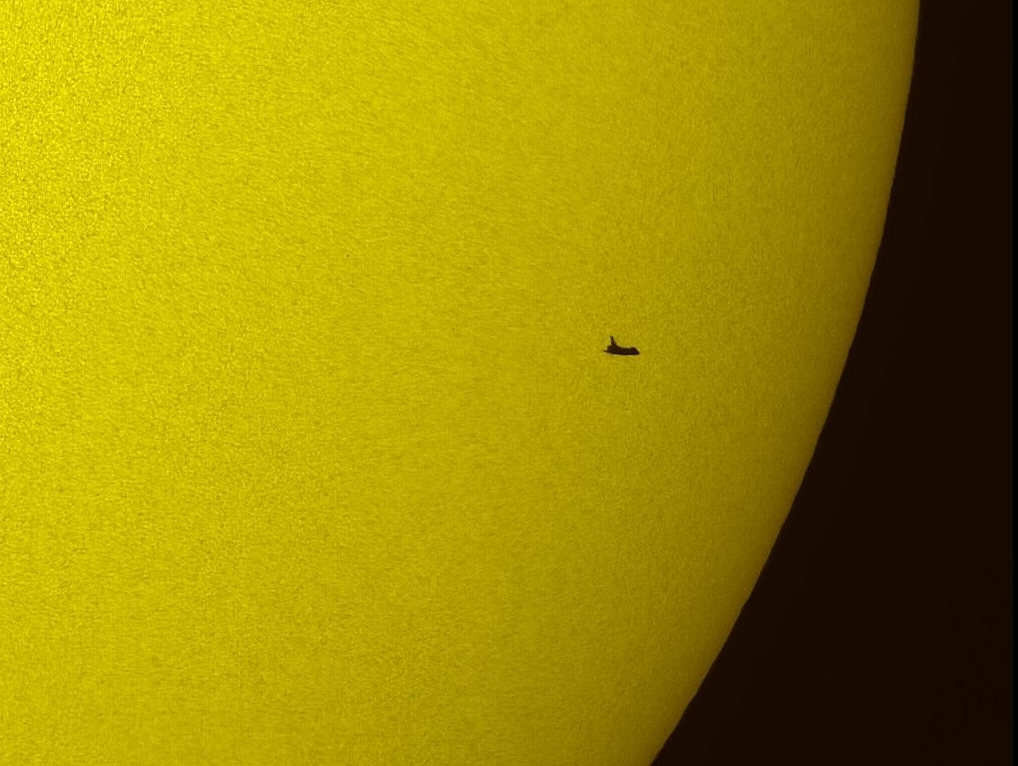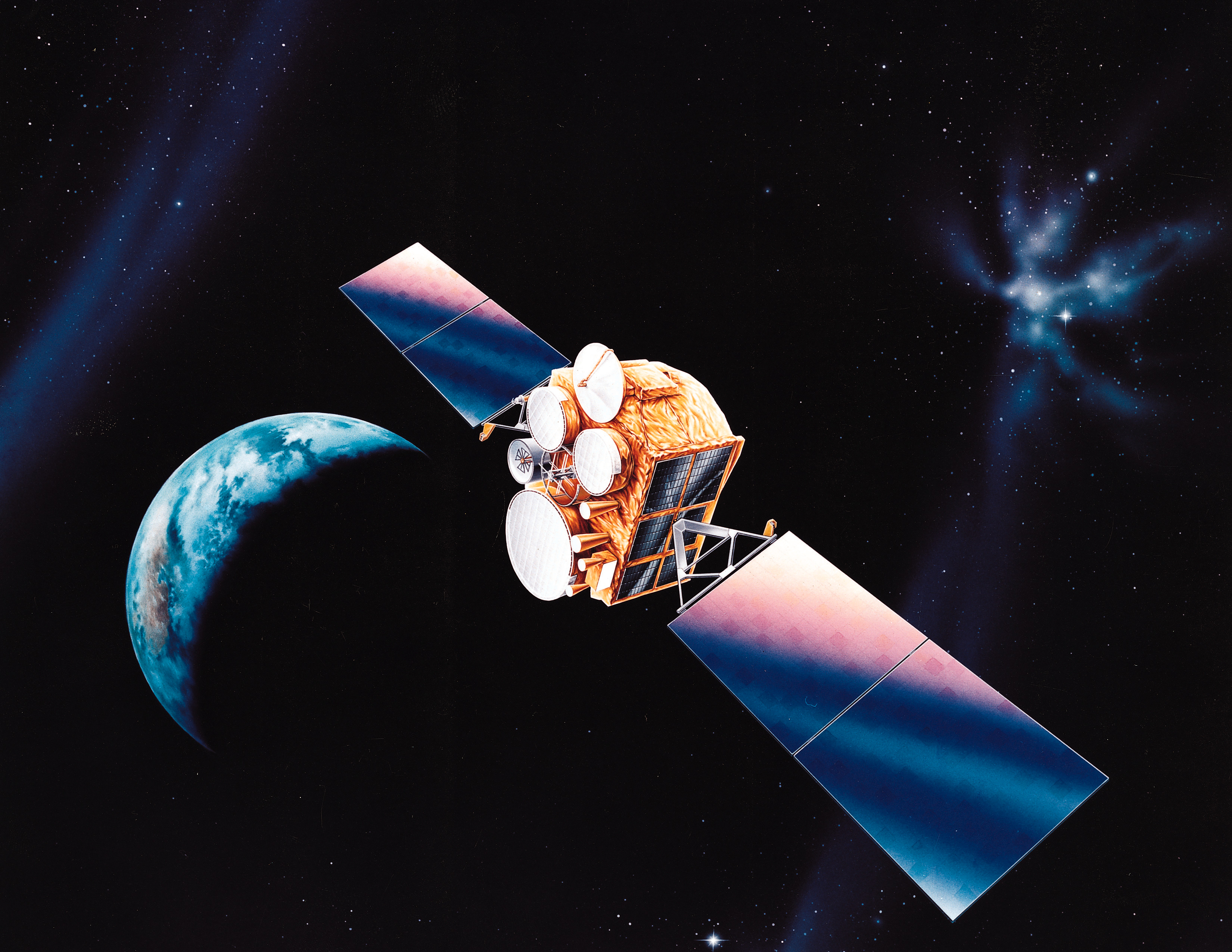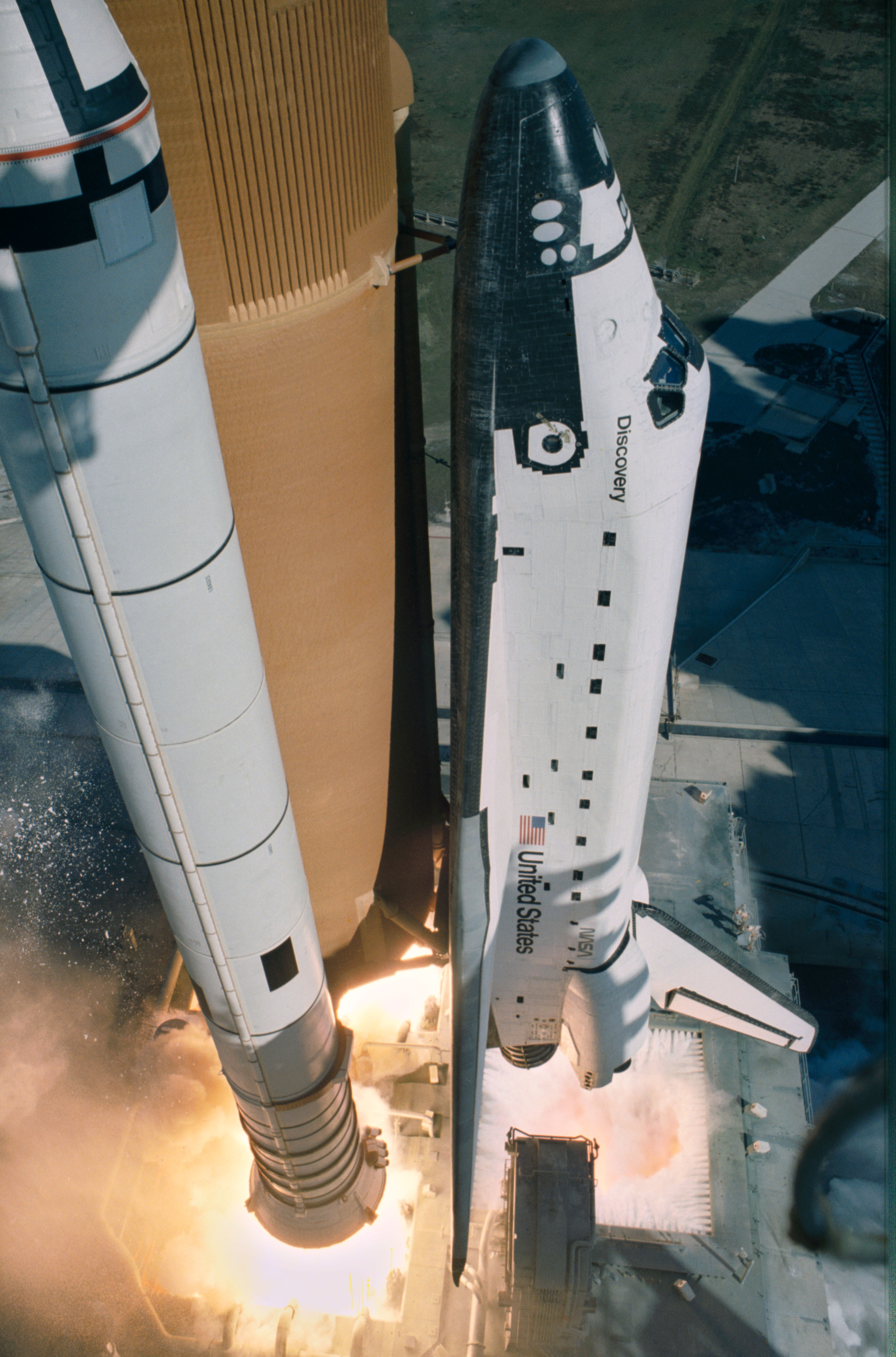|
STS-51J
STS-51-J was the 21st NASA Space Shuttle mission and the first flight of Space Shuttle ''Atlantis''. It launched from Kennedy Space Center, Florida, on October 3, 1985, carrying a payload for the U.S. Department of Defense (DoD), and landed at Edwards Air Force Base, California, on October 7, 1985. Crew Backup crew Crew notes All five astronauts on the secret mission were active-duty military officers. Before William A. Pailes was assigned to the STS-51-J flight, Mike Mullane was rumored to have been assigned as Mission Specialist 3 on his second trip to space. Mission summary STS-51-J launched on October 3, 1985, at 15:15:30 UTC (11:15:30 a.m. EDT), from Launch Pad 39A at the Kennedy Space Center. The launch was delayed by 22 minutes and 30 seconds due to a problem with a main engine liquid hydrogen prevalve close remote power controller; the controller was showing a faulty "on" indication. The mission was the second shuttle flight totally dedicated to de ... [...More Info...] [...Related Items...] OR: [Wikipedia] [Google] [Baidu] |
Inertial Upper Stage
The Inertial Upper Stage (IUS), originally designated the Interim Upper Stage, was a two-stage, solid-fueled space launch system developed by Boeing for the United States Air Force beginning in 1976 for raising payloads from low Earth orbit to higher orbits or interplanetary trajectories following launch aboard a Titan 34D or Titan IV rocket as its upper stage, or from the payload bay of the Space Shuttle as a space tug. Development During the development of the Space Shuttle, NASA, with support from the Air Force, wanted an upper stage that could be used on the Shuttle to deliver payloads from low earth orbit to higher energy orbits such as GTO or GEO or to escape velocity for planetary probes. The candidates were the Centaur, propelled by liquid hydrogen and liquid oxygen, the Transtage, propelled by hypergolic storable propellants Aerozine-50 and , and the Interim Upper Stage, using solid propellant. The DOD reported that Transtage could support all defense needs, but could ... [...More Info...] [...Related Items...] OR: [Wikipedia] [Google] [Baidu] |
Space Shuttle Atlantis
Space Shuttle ''Atlantis'' (Orbiter Vehicle designation: OV‑104) is a Space Shuttle orbiter vehicle which belongs to NASA, the spaceflight and space exploration agency of the United States. ''Atlantis'' was manufactured by the Rockwell International company in Southern California and was delivered to the Kennedy Space Center in Eastern Florida in April 1985. ''Atlantis'' is also the fourth operational and the second-to-last Space Shuttle built. Its maiden flight was STS-51-J made from October 3 to 7, 1985. ''Atlantis'' embarked on its 33rd and final mission, also the final mission of a space shuttle, STS-135, on July 8, 2011. STS-134 by ''Endeavour'' was expected to be the final flight before STS-135 was authorized in October 2010. STS-135 took advantage of the processing for the STS-335 Launch on Need mission that would have been necessary if STS-134's crew became stranded in orbit. ''Atlantis'' landed for the final time at the Kennedy Space Center on July 21, 2011. By th ... [...More Info...] [...Related Items...] OR: [Wikipedia] [Google] [Baidu] |
Space Transportation System
The Space Transportation System (STS), also known internally to NASA as the Integrated Program Plan (IPP), was a proposed system of reusable crewed space vehicles envisioned in 1969 to support extended operations beyond the Apollo program. (NASA appropriated the name for its Space Shuttle Program, the only component of the proposal to survive Congressional funding approval). The purpose of the system was two-fold: to reduce the cost of spaceflight by replacing the current method of launching capsules on expendable rockets with reusable spacecraft; and to support ambitious follow-on programs including permanent orbiting space stations around Earth and the Moon, and a human landing mission to Mars. In February 1969, President Richard Nixon appointed a Space Task Group headed by Vice President Spiro Agnew to recommend human space projects beyond Apollo. The group responded in September with the outline of the STS, and three different program levels of effort culminating with a ... [...More Info...] [...Related Items...] OR: [Wikipedia] [Google] [Baidu] |
STS-51-I
STS-51-I was the 20th mission of NASA's Space Shuttle program and the sixth flight of Space Shuttle ''Discovery''. During the mission, ''Discovery'' deployed three communications satellites into orbit. The mission launched from Kennedy Space Center, Florida, on August 27, 1985, and landed at Edwards Air Force Base, California, on September 3, 1985. Crew Spacewalks * '' Fisher and van Hoften '' – EVA 1 * EVA 1 Start: August 31, 1985 * EVA 1 End: August 31, 1985 * Duration: 7 hours, 20 minutes * '' Fisher and van Hoften '' – EVA 2 * EVA 2 Start: September 1, 1985 * EVA 2 End: September 1, 1985 * Duration: 4 hours, 26 minutes Crew seating arrangements Launch Mission summary ''Discovery'' launched at 6:58 a.m. EDT on August 27, 1985. Two earlier launch attempts, one on August 24 and another on August 25, were scrubbed – the first because of poor weather, and the second because the backup orbiter computer failed and had to be replaced. The successful launch ... [...More Info...] [...Related Items...] OR: [Wikipedia] [Google] [Baidu] |
Hertz
The hertz (symbol: Hz) is the unit of frequency in the International System of Units (SI), equivalent to one event (or cycle) per second. The hertz is an SI derived unit whose expression in terms of SI base units is s−1, meaning that one hertz is the reciprocal of one second. It is named after Heinrich Rudolf Hertz (1857–1894), the first person to provide conclusive proof of the existence of electromagnetic waves. Hertz are commonly expressed in multiples: kilohertz (kHz), megahertz (MHz), gigahertz (GHz), terahertz (THz). Some of the unit's most common uses are in the description of periodic waveforms and musical tones, particularly those used in radio- and audio-related applications. It is also used to describe the clock speeds at which computers and other electronics are driven. The units are sometimes also used as a representation of the energy of a photon, via the Planck relation ''E'' = ''hν'', where ''E'' is the photon's energy, ''ν'' is its freq ... [...More Info...] [...Related Items...] OR: [Wikipedia] [Google] [Baidu] |
X Band
The X band is the designation for a band of frequencies in the microwave radio region of the electromagnetic spectrum. In some cases, such as in communication engineering, the frequency range of the X band is rather indefinitely set at approximately 7.0–11.2 GHz. In radar engineering, the frequency range is specified by the Institute of Electrical and Electronics Engineers (IEEE) as 8.0–12.0 GHz. The X band is used for radar, satellite communication, and wireless computer networks. Radar X band is used in radar applications including continuous-wave, pulsed, single- polarization, dual-polarization, synthetic aperture radar, and phased arrays. X band radar frequency sub-bands are used in civil, military, and government institutions for weather monitoring, air traffic control, maritime vessel traffic control, defense tracking, and vehicle speed detection for law enforcement. X band is often used in modern radars. The shorter wavelengths of the X band allow ... [...More Info...] [...Related Items...] OR: [Wikipedia] [Google] [Baidu] |
Defense Satellite Communications System
The Defense Satellite Communications System (DSCS) is a United States Space Force satellite constellation that provides the United States with military communications to support globally distributed military users. Beginning in 2007, DSCS is being replaced by the Wideband Global SATCOM system. A total of 14 DSCS-III satellites were launched between the early 1980s and 2003. Two satellites were launched aboard the Space Shuttle ''Atlantis'' in 1985 during the STS-51-J flight. As of 14 September 2021, six DSCS-III satellites were still operational. DSCS operations are currently run by the 4th Space Operations Squadron out of Schriever Space Force Base. Background DSCS went through three major phases — IDCSP (Interim Defense Communication Satellite Program), DSCS-II, and DSCS-III. Since the first launch, DSCS has been the "workhorse" of military satellite communications. All DSCS III satellites have exceeded their 10-year design life. The National Science Foundation use ... [...More Info...] [...Related Items...] OR: [Wikipedia] [Google] [Baidu] |
STS-51-C
STS-51-C (formerly STS-10) was the 15th flight of NASA's Space Shuttle program, and the third flight of Space Shuttle ''Discovery''. It launched on January 24, 1985, and made the fourth shuttle landing at Kennedy Space Center, Florida, on January 27, 1985. STS-51-C was the first shuttle mission to deploy a dedicated United States Department of Defense (DoD) payload, and consequently many mission details remain classified. Crew Backup crew Crew seating arrangements Mission summary STS-51-C launched from Kennedy Space Center (KSC) on January 24, 1985, at 19:50:00 UTC, and was the first of nine shuttle missions in 1985. It was originally scheduled for January 23, 1985, but was delayed because of freezing weather. ''Challenger'' had been scheduled for this flight, but ''Discovery'' was substituted when problems were encountered with ''Challenger'' thermal protection tiles. STS-51-C marked the 100th human spaceflight to achieve orbit. The mission's length of thre ... [...More Info...] [...Related Items...] OR: [Wikipedia] [Google] [Baidu] |
Liquid Hydrogen
Liquid hydrogen (LH2 or LH2) is the liquid state of the element hydrogen. Hydrogen is found naturally in the molecular H2 form. To exist as a liquid, H2 must be cooled below its critical point of 33 K. However, for it to be in a fully liquid state at atmospheric pressure, H2 needs to be cooled to .IPTS-1968 iupac.org, accessed 2020-01-01 A common method of obtaining liquid hydrogen involves a compressor resembling a jet engine in both appearance and principle. Liquid hydrogen is typically used as a concentrated form of . Storing it as liquid takes less space than storing it as a gas at ... [...More Info...] [...Related Items...] OR: [Wikipedia] [Google] [Baidu] |
Eastern Time Zone
The Eastern Time Zone (ET) is a time zone encompassing part or all of 23 states in the eastern part of the United States, parts of eastern Canada, the state of Quintana Roo in Mexico, Panama, Colombia, mainland Ecuador, Peru, and a small portion of westernmost Brazil in South America, along with certain Caribbean and Atlantic islands. Places that use: * Eastern Standard Time (EST), when observing standard time (autumn/winter), are five hours behind Coordinated Universal Time ( UTC−05:00). * Eastern Daylight Time (EDT), when observing daylight saving time (spring/summer), are four hours behind Coordinated Universal Time ( UTC−04:00). On the second Sunday in March, at 2:00 a.m. EST, clocks are advanced to 3:00 a.m. EDT leaving a one-hour "gap". On the first Sunday in November, at 2:00 a.m. EDT, clocks are moved back to 1:00 a.m. EST, thus "duplicating" one hour. Southern parts of the zone (Panama and the Caribbean) do not observe daylight saving time ... [...More Info...] [...Related Items...] OR: [Wikipedia] [Google] [Baidu] |
Mike Mullane
Richard Michael Mullane (born September 10, 1945; Col, USAF, Ret.) is an engineer and Weapon Systems Officer, a retired USAF officer, and a former NASA astronaut. During his career, he flew as a mission specialist on STS-41-D, STS-27, and STS-36. Early life and education Richard Michael Mullane was born September 10, 1945, in Wichita Falls, Texas. At the time of his birth, his father, Hugh, was serving as a flight engineer on a B-17 in the Pacific War. His family moved regularly until his father was diagnosed with polio and lost the use of his legs, causing the family to move to Albuquerque, New Mexico. He was a Second Class Scout in the Boy Scouts of America. He graduated from St. Pius X High School, Albuquerque, New Mexico, in 1963, then received a Bachelor of Science degree in Military Engineering from the United States Military Academy in 1967 and was awarded a Master of Science degree in Aeronautical Engineering from the U.S. Air Force Institute of Technology in 1975. ... [...More Info...] [...Related Items...] OR: [Wikipedia] [Google] [Baidu] |
Manned Spaceflight Engineer Program
The Manned Spaceflight Engineer Program was an effort by the United States Air Force to train American military personnel as payload specialists for United States Department of Defense missions on the Space Shuttle program. Background The United States Air Force (USAF) and the National Reconnaissance Office (NRO) of the United States Department of Defense (DoD) participated in the development of the Space Shuttle from its official inception in 1969. To save money, the shuttle was intended to serve as the United States' national launch system for all civilian, military, and classified payloads.Day, Dwayne A.Big Black and the new bird: the NRO and the early Space Shuttle ''The Space Review'', 11 January 2010.Day, Dwayne A.The spooks and the turkey ''The Space Review'', 20 November 2006. The DoD influenced key aspects of the shuttle's design such as the size of its cargo bay, and Congress reportedly told DoD that it would not pay for satellites not designed to fit into the bay. The U ... [...More Info...] [...Related Items...] OR: [Wikipedia] [Google] [Baidu] |


.jpg)



